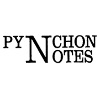Abstract
Among the many possible approaches to Gravity's Rainbow, two are remarkable because they remain, twenty-plus years after the book's publication, untravelled roads. The first approach would entail using current narratology to open analyses of this novel's difficult joyride. It would take us well beyond studies of the novel's cinematic features or the tropics of its narrative discourse; in sum, this approach would open up Pynchon's narrative poetics in ways only promised by the titles of various essays and books. The second approach would entail readings of the novel by way of Deleuze and Guattari. The general absence of work along this path is simply unaccountable because, as I suggest later, the correlations of Deleuzian theory with Pynchon's fiction are powerful and crucial. In what follows I explore how the two neglected approaches complement each other. This analysis isolates for study a specific feature of Pynchon's writing, yet one that always marks a zone where narrative poetics may be seen converting into a Deleuzian schizophrenia, and vice versa.
How to Cite:
Weisenburger, S., (1994) “Hyper-Embedded Narration in Gravity's Rainbow”, Pynchon Notes , 70-87. doi: https://doi.org/10.16995/pn.199
Downloads:
Download PDF

